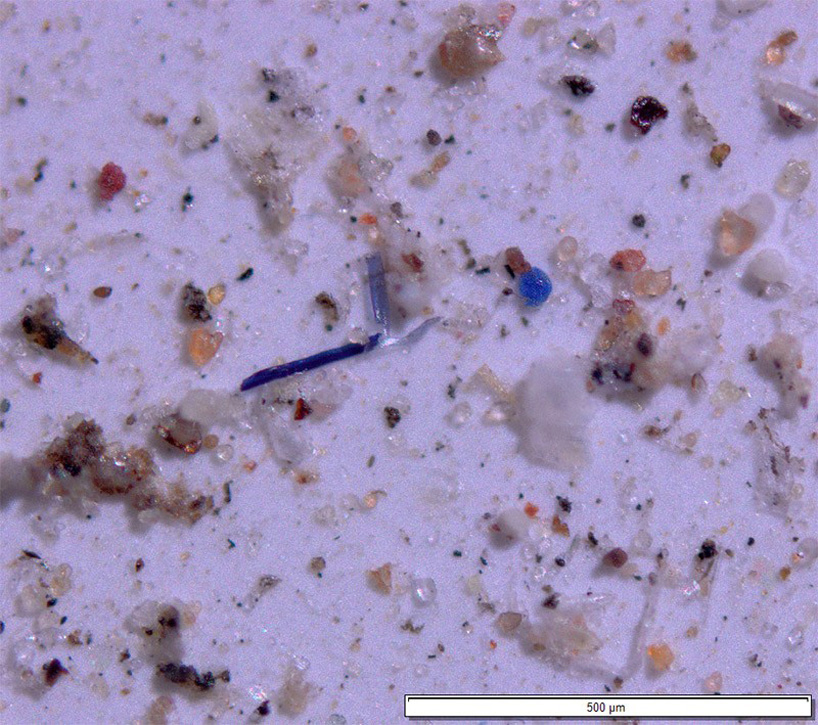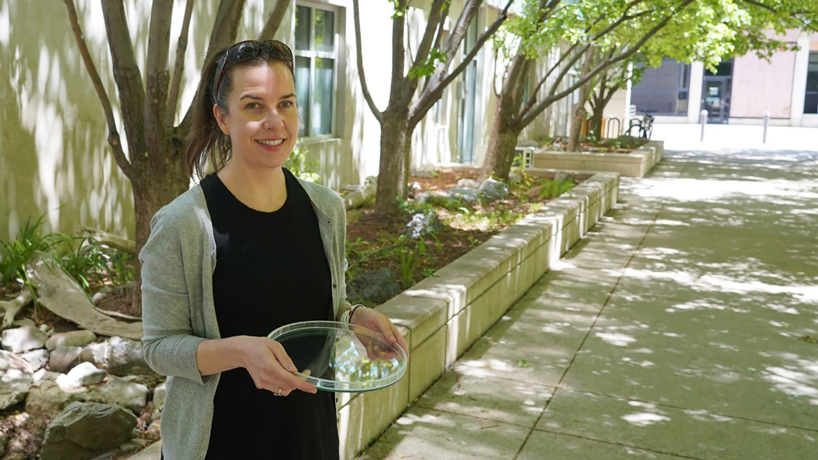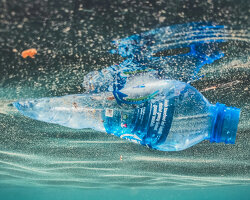a recent study by utah state university assistant professor janice brahney and her team reveals that more than 1000 tons of plastic rains on US protected areas annually. the amount, which is equivalent to more than 123 million plastic water bottles, was calculated using samples of microplastics and other particulates collected over 14 months in 11 national parks and wilderness areas. the findings show that besides wastewaters, rivers, and oceans, these microplastics also accumulate in the atmosphere. microscope image of microplastics in atmospheric particulate samples. 500 pm, courtesy of janice brahney, utah state university
microscope image of microplastics in atmospheric particulate samples. 500 pm, courtesy of janice brahney, utah state university
header image of rocky mountain national park, which had the greatest amount microplastics among the national parks and wilderness areas in the study, via utah state university
using high-resolution atmospheric deposition data, utah state university assistant professor janice brahney and her team identified samples of microplastics and other particulates collected over 14 months in 11 national parks and wilderness areas. the findings, which are reported in the june 12 issue of science magazine, highlight the source, transport, and fate of plastics on earth surfaces as well as the contamination of US protected sites. by examining weekly wet and monthly dry samples from 11 sites, the authors were able to estimate that more than 1000 tons of microplastics, equivalent to more than 123 million plastic water bottles, fall on protected lands in the western US.
‘we were shocked at the estimated deposition rates and kept trying to figure out where our calculations went wrong,’ says brahney. ‘we then confirmed through 32 different particle scans that roughly 4% of the atmospheric particles analyzed from these remote locations were synthetic polymers.’
according to the report, the world produced 348 million metric tons of plastic in 2017, while the per capita production of plastic waste is 340 grams per day in the US. though high resilience and longevity make plastics particularly useful in everyday life, it’s these same qualities that lead to progressive fragmentation instead of degradation in the environment. as such, these microplastics accumulate in wastewaters, rivers, and ultimately the world’s oceans, while brahney’s team has discovered that they also accumulate in the atmosphere.
‘several studies have attempted to quantify the global plastic cycle but were unaware of the atmospheric limb,’ brahney notes. ‘our data show the plastic cycle is reminiscent of the global water cycle, having atmospheric, oceanic, and terrestrial lifetimes.’
 USU assistant professor janice brahney, image by dennis hinkamp
USU assistant professor janice brahney, image by dennis hinkamp












